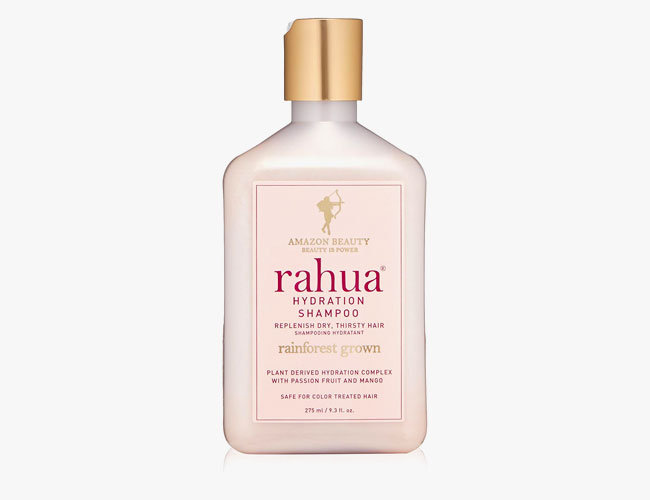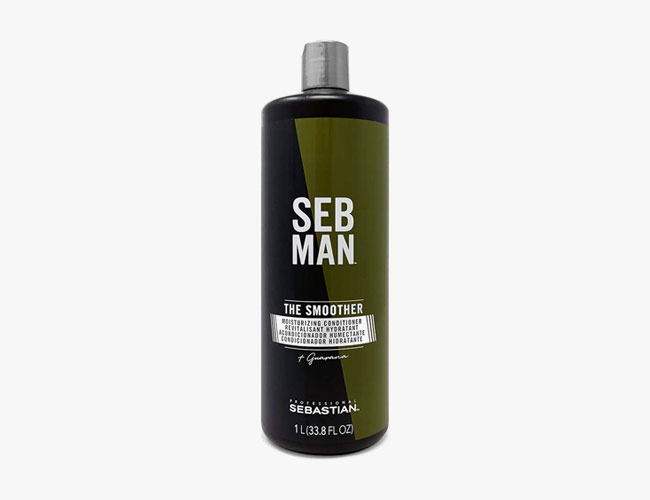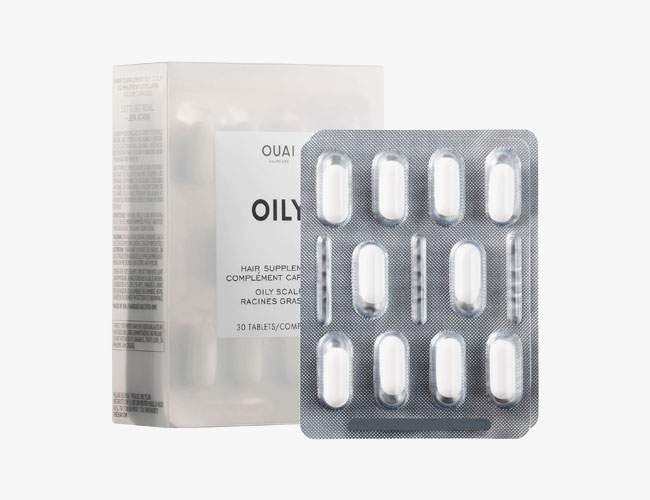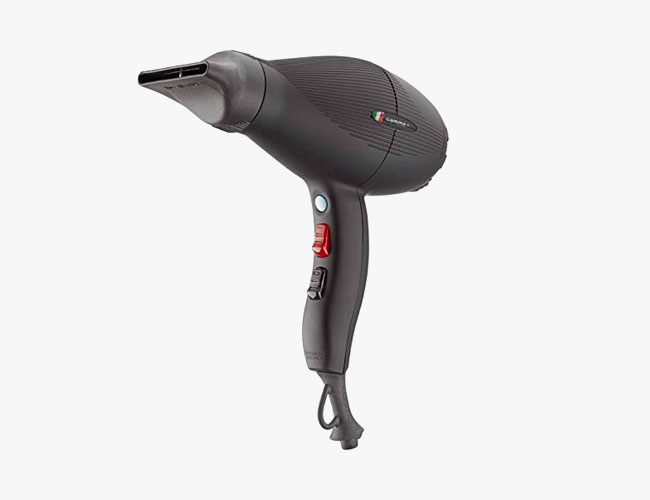Every morning, you wake up and have the same routine. Maybe it includes a workout, coffee or listening to the news. It definitely includes some sort of grooming regimen, however. And for the guys with any amount of hair on their heads, it entails some sort of styling regimen too.
There’s one thing that isn’t the same from one day to the next, though: How cooperative your hair is. Some days it’s just right, with the perfect weightlessness, not too oily nor too dry, and your favorite paste or fiber takes to it exactly as you’d desired. Hopefully, this happens on the day you take company headshots.
Other days, though — and for many of us, most days — the hair is stubborn. It’s too dry or too oily. But you seemed to have done everything else the same up til now, including last night’s hair-care regimen or this morning’s shower. So, what gives? Why isn’t it always styleable, every day? To get to the bottom of it, I spoke with Robert Watkins, founder of The Mailroom Barber Co., a barbershop with locations in Florence and Greenville, South Carolina that also makes its own hair, beard and shave products. Here is some of his advice on how to make sure that you’re ready for company headshots any day of the year.
Don’t Wash Your Hair Every Day
Oil is one of the biggest hurdles between you and cooperative hair. Or rather, the scalp’s oil levels are the balance beam many of us teeter upon, some days better than others. When your hair is too greasy, it is weighed down and stubborn. But when it’s not oily enough, it poofs out and is also stubborn. Preserving this balance — the “right amount” of oil — often starts by shampooing less.
When you shampoo, you’re removing all the oil on your scalp and in your hair, in addition to the dirt, grime and styling product you accumulated all day. Those last things are necessary to flush away, but can usually be done with warm water and conditioner. Instead, shampoo every third day, or once a week, as needed. You can (and should) use a shampoo that promises moisture and is gentle enough for daily use, even if you’ll be using it intermittently.
By shampooing less, you’re also playing a long game in terms of benefits: “Shampoo is the main thing that makes your hair overproduce sebum,” Watkins says. “The scalp basically overreacts in a panic and ramps up the amount of sebum being made.” So, the next day, you’ll produce even more oil than you otherwise would have, which will happen cyclically unless you correct the course. So instead of using more shampoo to fight oil, use less.
When shopping, the best thing to consider is cost. Avoid things that are just a few bucks, even if they promise to have extra strength, says Watkins. They are often made with silicone or harsh detergents and can dry out the hair and scalp and perpetuate your problems.
Rahua Hydration Shampoo is a good one to use every few days, prior to conditioning.
See also: Products to use while cutting back on shampoo.
Condition Daily
Where shampoo can do a little too much “good,” conditioner can never do enough. And I say that positively: Conditioner is all good, and should be used all days. Consider the different relationship that shampoo and conditioner both have with your hair: “Shampoo changes the pH levels of your hair,” says Watkins, of the oil balance you fight so hard to preserve. “If the hair dries in this state, it will be weak, frizzy, and brittle. Conditioner [nourishes and] smooths the hair, returning it to the ideal pH. This gives you the ability to style your hair effortlessly with much less effort. Even if you don’t style your hair after conditioning, it will look soft, healthy and smooth.” But as a canvas for styling, conditioned hair has the right amount of nourishment and moisture to cooperate.
Are you sold on conditioner yet? Use it every day, especially after shampooing (but never together). It’s the last step in your hair care regimen, prior to styling. It also helps rinse and flush any oil, grime and product in the hair that you want gone before bed.
“There’s a reason why women’s hair looks ten times better than men’s hair most of the time,” Watkins jokes. “It’s conditioner. They got the memo.” So here it is for you, too.
And here’s my memo on a great conditioner: Try Seb Man’s The Smoother Conditioner for salon-caliber hair.
Re-Calibrate Your Oil Production
This is a tip specifically for people with oily scalps and hair: As mentioned above, you can “train” your hair to produce less sebum over time. This will help ensure that you have properly nourished hair every day, though it may take a couple months for you to note significant changes.
The first and most important step is to shampoo less, which we’ve already discussed. You can do this incrementally if you think your scalp is too oily. Try doing it every other day for a couple weeks, then every third day, conditioning all the while. This is a good minimum benchmark to get to, and you should notice that your sebum production levels reduce accordingly. (It won’t happen on the first attempt. You really do have to be patient with it.)
Secondly, try an oily hair supplement like Ouai’s 3-month reset pills, which gives you a hearty dose of green tea extract and niacin every day, to regulate sebum production over time. By the end of the 90-day plan, assuming you’re shampooing less frequently, too, you should be on track to balanced, stylable hair on the regular.
Always Have Your Next Haircut Booked
If you want stylable hair every day, you need to keep it trim. That means biweekly cuts for fades and buzzed sides, says Watkins. Five weeks is the maximum if you don’t mind a little growth, without the style being compromised by natural unevenness. For medium length cuts, he recommends four to six weeks between trimming and texturizing: “It’s important to have the ends trimmed to keep the hair manageable and looking alive and healthy,” he says. “If you’re going from medium to long hair, it’s also important to keep the shape flowing well and stacking well as you transition between awkward phases. If you try to go the marathon route without getting it cleaned up, your hair will look dead and flat.”
Use the Right Amount of Product and Apply It to the Root
I can’t give you one single solution to the question: “How much hair product should I use?” It’s going to come down to lots of factors. For starters, consider your hair’s density, thickness, length, texture, oil levels and the desired styling effect (like hold and shine). The type of product you use will differ, too, and will impact whether you apply it to dry hair or damp, towel-dried hair.
But there is one general tip for finding the right amount of product. If you want your hair to look buoyant or even texturized, then don’t weigh it down with a bunch of product, says Watkins. This applies also to how you apply the product: Target the roots, particularly with texturizing and matte products that don’t need to be slicked back. You control the style by controlling the base of the hair, not by weighing down the hair strand itself.
Get a Blow Dryer
If you want more control over a medium or longer hairstyle — and don’t want to leave it to chance every day — then you need a blow dryer. The heat amplifies the powers of each product, and locks in your style for a longer run, meaning it won’t come undone halfway through the workday. Blow dryers are especially useful if you want volume and texture, says Watkins, adding that the device might even save you from needing too much styling product: “When the hair goes from wet to dry, it stays wherever it dries. So, when you use a blow dryer, you’re smoothing out the hair, plus adding body and texture [if desired]. Then you don’t have to use a strong product [or as much product] because the hair is already where you want it to be.”
The Gamma+ Italia Ion Ceramic Blow Dryer is particularly effective.





